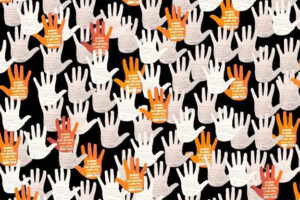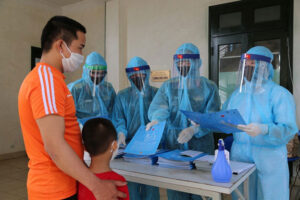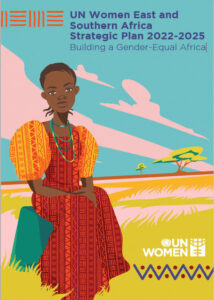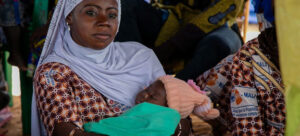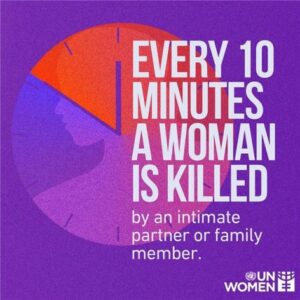
Civil Society, Climate Change, Environment, Featured, Gender, Global, Global Governance, Headlines, Human Rights, IPS UN: Inside the Glasshouse, TerraViva United Nations

Credit: UN Women
– Climate change exacerbates existing gender inequalities and gender-based violence. At COP29 in Azerbaijan, governments have been urged to prioritize gender-responsive climate policies that address the specific needs of women and girls, and serious concerns have been raised about backtracking on women’s rights during these crucial negotiations on climate action.
In Azerbaijan, extreme weather events made worse by global warming and poor environmental management are heightening the risks women and girls face. As the frequency and intensity of climate-related disasters increase, more families are being left vulnerable, accelerating the need for targeted interventions.
Clean World Social Union participated in COP29 to address the critical intersection of gender inequality and the climate crisis, advocating for policies that prioritize the needs and rights of women and girls in the face of environmental challenges.
Clean World Social Union is one of only two civil society organizations in Azerbaijan providing specialist accommodation and support to women escaping gender-based violence. They operate a shelter in the capital city, Baku, housing up to 60 women and children. A second shelter in Ganja, managed by the Public Union “Tamas,” accommodates 25 residents.
Clean World Social Union collaborates with the international women’s rights organization Equality Now to strengthen the legal rights of women and girls in Azerbaijan.

Leyla Suleymanova
Coordinator Leyla Suleymanova spoke to Equality Now about how climate-induced displacement is impacting women in the country and why the government urgently needs to do more in response.
What are some of the ways that climate change is affecting women and girls in Azerbaijan?
Climate change is definitely making women more vulnerable to gender-based violence. We’ve worked with many women from rural areas whose families have lost their homes and livelihoods due to floods, drought, and other environmental crises. People become homeless, their lives have been devastated. Before, they had opportunities to earn money to improve their lives, but now they don’t.
This is forcing people to migrate and is pushing them into urban areas. Gender-based violence increases because when people become poorer, it puts pressure on families who cannot earn a living, and men can become more violent. Every day, we receive hundreds of calls from women, but due to the limited capacity of our shelters, we have to refuse many.
After extreme climate events, many women migrate alone to urban centers like Baku to support their families. However, some do not have the necessary skills or knowledge to find employment and earn money. Displacement caused by ecological crisis isolates women from their social networks and support systems, and makes them more vulnerable to abuse. As well as domestic violence, we have seen increases in commercial sexual exploitation and trafficking.
How is Azerbaijan’s government responding to the impact that climate change is having on women in the country?
In Azerbaijan, there is some understanding about how climate change impacts women and girls, but not enough. And while the government is doing some things about climate change, it’s not making the connection between ecological crisis, gender issues, and gender-based violence.
Changes in legislation and punishment for child marriage are getting tougher, but I think the ecological crisis is making the situation worse. With people becoming poorer and life getting harder, this connects to child marriage. Some families think if they have a girl who they cannot afford to provide food and education for, she should be married off quickly.
In cases of gender-based violence after extreme weather events, women often don’t have financial support, don’t know who to turn to, and may have psychological issues. It is sometimes very difficult to support these victims as they need free and regular assistance, but there are many we cannot help because of limited resources. And when there are floods, there is a big increase in the number of women needing help but we cannot provide so much support.
I have not heard of any official strategies or action plans to improve the situation for women when an ecological crisis happens. Government strategies should include implementation and coordination to address women’s issues. Without this, it is difficult to deal with these problems.
What action on climate change to support women is needed from governments?
Women and girls are being directly and disproportionately affected by the ecological crisis and we have to raise this with governments and other key stakeholders. There is a critical opportunity to address the unique challenges by developing and implementing comprehensive frameworks and gender-responsive strategies that tackle both the immediate and longer-term impacts.
Vocational training programs can help women adapt to climate change by equipping them with skills for sustainable livelihoods. This is particularly crucial for women in rural areas who may need to migrate to urban centers, where employment opportunities are more accessible. Providing these tools empowers women to rebuild their lives and communities while fostering resilience against climate-related challenges.
It is equally important to increase women’s participation in decision-making processes related to climate policies. By including women’s perspectives and experiences, governments can create more equitable and effective solutions. Gender equality must be central to these discussions, ensuring women’s voices shape policies addressing ecological and societal impacts.
Strengthening support systems is another vital step. Expanding access to psychological counseling, legal aid, and safe shelters for women and girls will address the immediate fallout of climate shocks. Additionally, building local capacity to meet the needs of women affected by these events will ensure long-term sustainability.
Public awareness campaigns are necessary to educate communities about the gendered impacts of climate change, and women should be given information about who they can turn to for support when their rights have been violated. Initiatives can shift societal attitudes, promoting a greater understanding of women’s vulnerabilities and the need for protective measures.
The COP29 summit in Azerbaijan underscored the urgency of integrating gender issues into climate action. Coordination among government agencies, civil society organizations, and international partners is essential to ensure these efforts are effective, inclusive, and provide women and girls with protection in the face of an evolving climate crisis.
Maithreyi Kamalanathan, Equality Now
IPS UN Bureau

